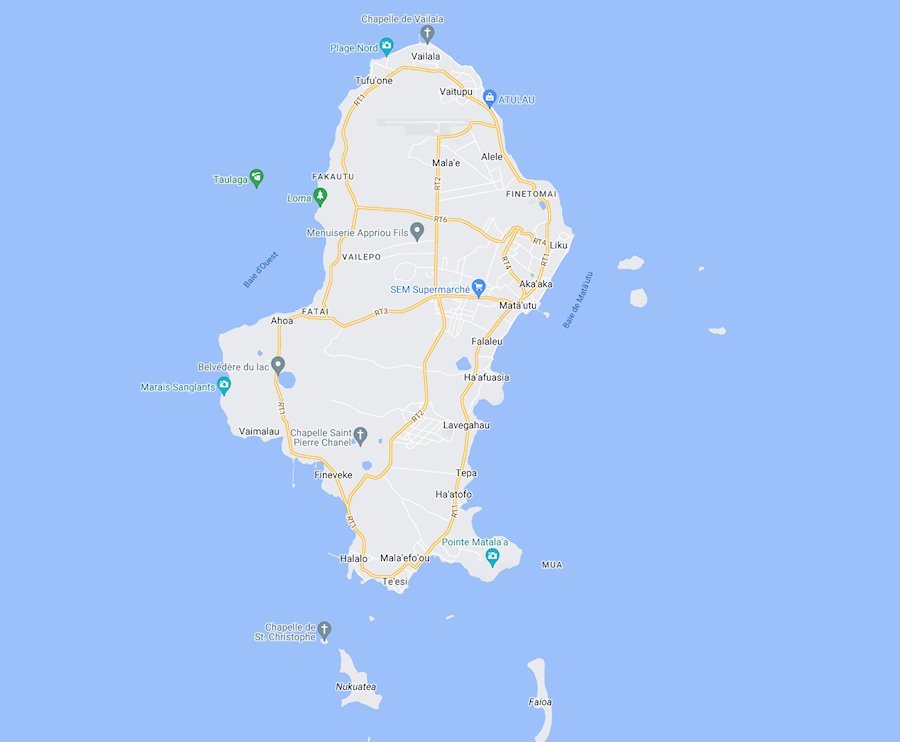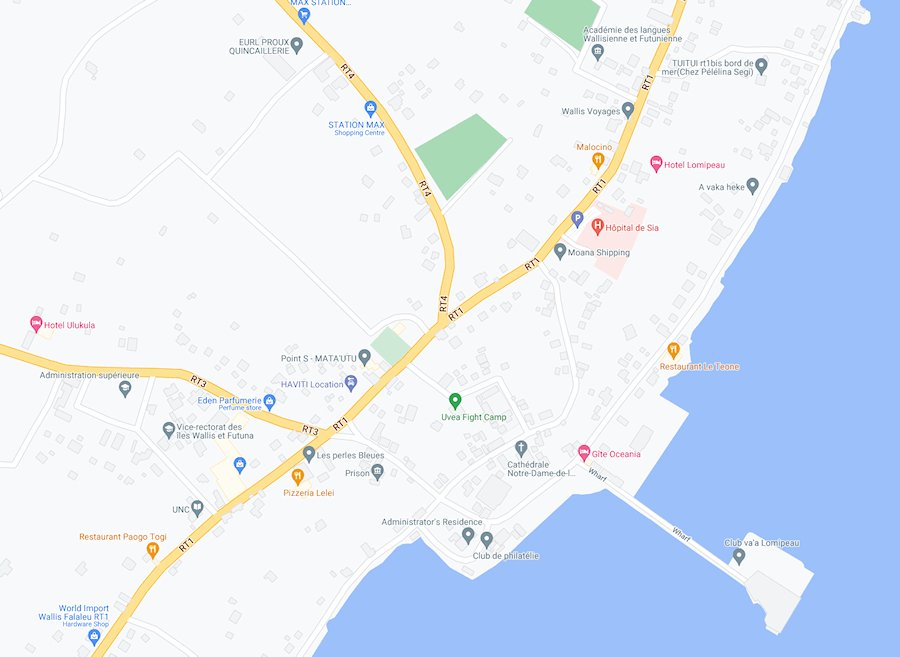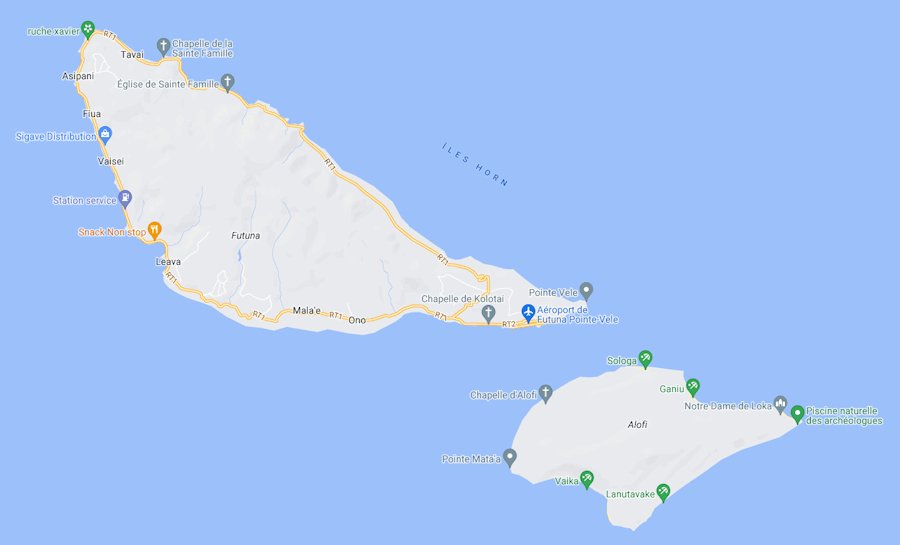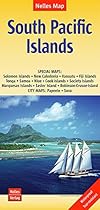Travel Notes: Oceania - Wallis and Futuna Travel Notes.
Short URL: https://tnot.es/WF
Wallis and Futuna Travel and Tourism on Travel Notes
From traditional dances to ancient rituals, explore the cultural treasures of this enchanting archipelago while indulging in its breathtaking natural wonders.
About Wallis and Futuna
Wallis and Futuna is made up of two groups of volcanic islands a couple of hundred kilometres apart.
Wallis and Futuna represent a unique blend of Polynesian tradition and French influence, with a distinct cultural identity shaped by their remote location in the South Pacific Ocean.
 Add a Business - Add a Location -
Add a Lodging - Add Travel Content
- Add URL
- Travel Services.
Add a Business - Add a Location -
Add a Lodging - Add Travel Content
- Add URL
- Travel Services.
Mapping Wallis and Futuna
Map of Wallis Island
Wallis and Futuna is located north-east of Fiji, west of Western Samoa, and south of Tuvalu.
Wallis, the largest island, is also known as 'Uvea'. Futuna and Alofi are smaller and lie to the south-east of Wallis.
The capital of the territory is Mata-Utu, located on the island of Wallis.
Wallis and Futuna Overview
Wallis and Futuna is a French overseas collectivity situated in the South Pacific Ocean.
Wallis and Futuna maintain a unique cultural identity, with strong ties to traditional Polynesian customs and values.
Wallis has ancestral connections with Tonga, while Futuna traces its roots to Samoa.
Culture
The culture of Wallis and Futuna is deeply rooted in Polynesian traditions.
The islands have a rich oral tradition, with storytelling playing a significant role in preserving history and cultural heritage.
Traditional practices such as dance, music, and tattooing are still important aspects of daily life.
Economy
The economy of Wallis and Futuna is primarily based on subsistence agriculture, fishing, and remittances from expatriates.
The islands receive financial assistance from France, which helps support public services and infrastructure development.
Tourism is limited due to the islands' remote location and lack of infrastructure.
Geography
Wallis and Futuna are located about two-thirds of the way from Hawaii to New Zealand.
They are surrounded by coral reefs and have a tropical climate.
Government
Wallis and Futuna is officially an overseas collectivity of France; administered by a Prefect, appointed by the French president.
The islands have a local assembly and elect representatives to the French National Assembly and the French Senate.
History
The islands were first sighted by European explorers in the 18th century and were subsequently visited by various European powers.
In 1842, the islands were made a French protectorate, and in 1959, they became an overseas territory of France.
Languages
The official languages of Wallis and Futuna are French and Wallisian (also known as Wallisian-Futunan or Uvean), which is a Polynesian language.
Futunan, another Polynesian language, is also spoken on the islands.
Religion
The majority of the population in Wallis and Futuna is Roman Catholic, with the religion having a significant influence on both social and cultural aspects of life on the islands.
Visiting Wallis and Futuna
The islands of Wallis and Futuna are relatively remote and have limited access, with no international airports.
If you plan to visit Wallis and Futuna, it's essential to check travel advisories, as well as any entry requirements or restrictions imposed by the local authorities or the French government.
You may consider reaching out to your nearest French Embassy or Consulate for further assistance regarding travel to Wallis and Futuna.
Cultural Activities
Traditional activities such as kava ceremonies, dance performances, and feasting are still prevalent in Wallis and Futuna.
Tourism
While not a major tourist destination compared to other South Pacific islands, Wallis and Futuna offer natural beauty, pristine beaches, and a unique Polynesian culture for those seeking a more off-the-beaten-path experience.
Transportation
There are regular flights connecting Wallis and Futuna with New Caledonia and Fiji.
The islands also have a small port for cargo ships and occasional passenger vessels.
Wallis Archipelago
Map of Mata Utu
British explorer Samuel Wallis visited the area in the early 1700's.
The main island of Wallis is called Uvea in the Wallisian language.
Mata Utu
The capital of the territory is on Wallis Island.
Futuna Archipelago
Map of Futuna and Alofi
Two Dutch navigators first sighted the mountainous islands of Futuna and Alofi in 1617.
The island of Futuna lies north-east of Fiji, north-west of Tonga and west of Samoa, and forms, together with Alofi to the south-east, the Hoorn Islands archipelago.
April is the start of hurricane season.
French Citizens
The islanders have had French citizenship since the early 1960's.
For some, Tahiti, New Caledonia and Wallis and Futuna are idyllic tropical islands with a French flavour, while for others they represent continuing French colonialism, thwarted independence movements and nuclear testing.
Pacific Islands Travel
Pacific Islands Travel Guides.
More From Travel Notes
Travel Notes Online Guide to Travel
Africa - Asia - Caribbean - Europe - Middle East - North America - Oceania - South America.
The Travel Notes Online Guide to Travel helps visitors plan their trip with country and city travel guides, local tourist information, reviewed web sites, and inspiring travel content.
Travel and Tourism Guides on Travel Notes
If Travel Notes has helped you, please take a moment to like us on Facebook and share with your friends on social media.
Travel Resources
.
Travel & Tourism With Industry Professionals.














